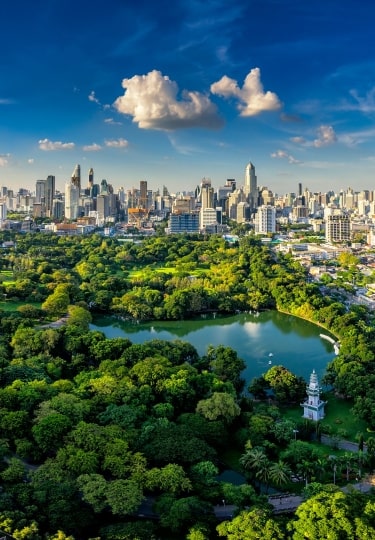When you consider what Thailand is known for, what’s surprising is how many possibilities come up. This long south-east Asian country—with its toes in the ocean and its head in the jungle—seems to deliver the entire gamut: exciting city breaks, profound nature immersions, and world-class beaches. Not to mention its delicious food.
No wonder Thailand does it all with a smile. You’ll also be beaming when you witness the dazzling cityscapes below Bangkok’s sky bars, meet the elephants of Chiang Mai, or relax on the epic beaches of Koh Samui. Here’s a list of the best things that Thailand is known for.
Bangkok
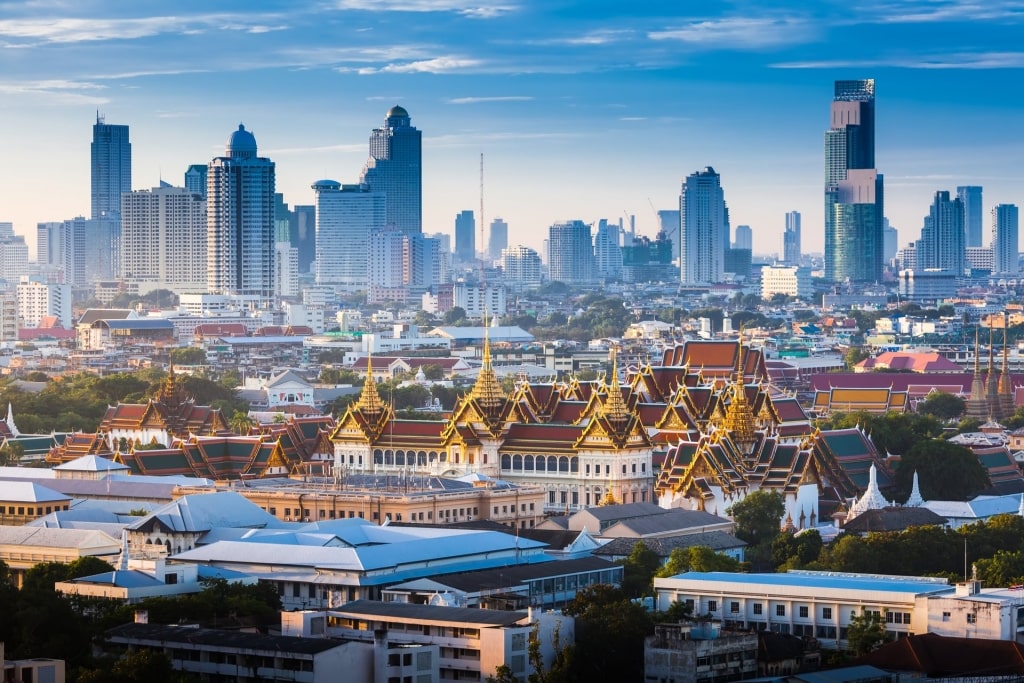
Bangkok
Based around the gentle sway of the wide Chao Praya river, Bangkok is Thailand’s capital and home to two million people. Easily the country’s major urban hub, this engrossing city is a visual feast of gold-tipped temples, shining skyscrapers, and streets busy with food stalls, tuk-tuks, and the occasional orange-robed monk. What Thailand is known for is the riotous life of this “City of Angels”—whether by sunny day or neon-lacquered night.
The Grand Palace is, for many, the essential first stop. A sixty-acre shrine to Thai culture, the high walls of this former official residence of the Thai royal family contain palatial architecture, gilded holy sites, and epic artworks. It’s the stop that grounds you in the grand history of Thailand.
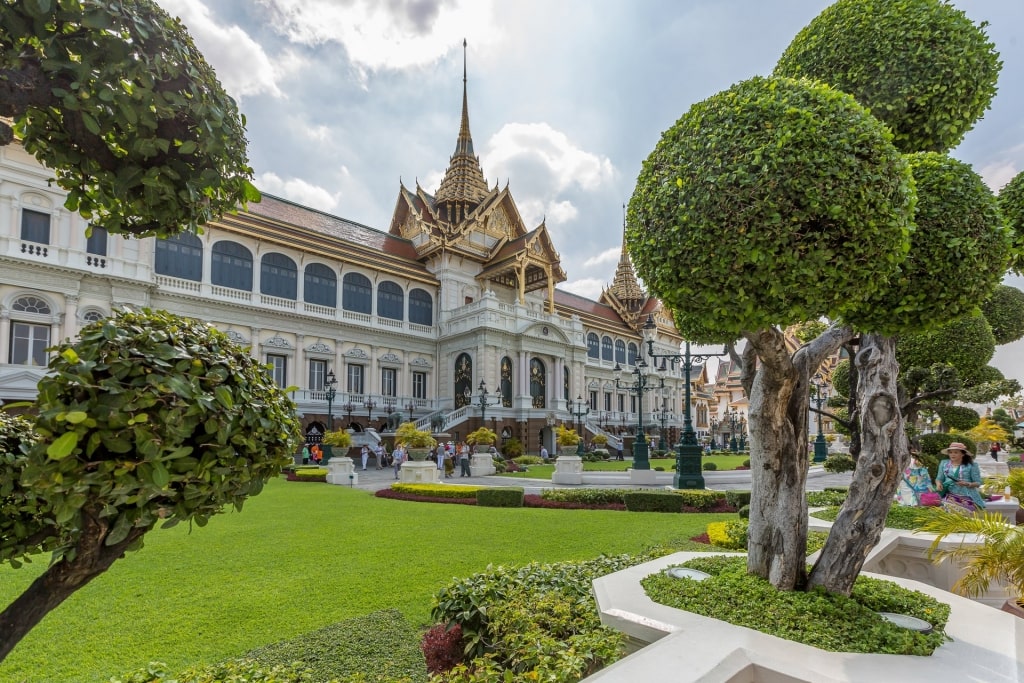
Grand Palace, Bangkok
The Chatuchak Weekend Market is half the size of the Grand Palace, making it one of the best places to buy Thailand souvenirs. The largest street market on the continent, this is an Aladdin’s Cave of intriguing knick-knacks, real finds, and the world’s greatest selection of elephant pants.
Be sure to arrive early—this Bangkok market runs Friday, Saturday, and Sunday and is popular with city denizens as well as farang (foreigners).
Less intense is the famous Khao San Road. This tourist hub, a magnet for backpackers in particular, has established itself as a place for travelers to mingle in raucous bars, procure Rolexes of dubious provenance, and scoff bowlfuls of pad thai. Since it’s just a short walk north of the Grand Palace, it’s possible to swing by for a taste of its rambunctious notoriety (or a longer stay depending on how it grabs you).
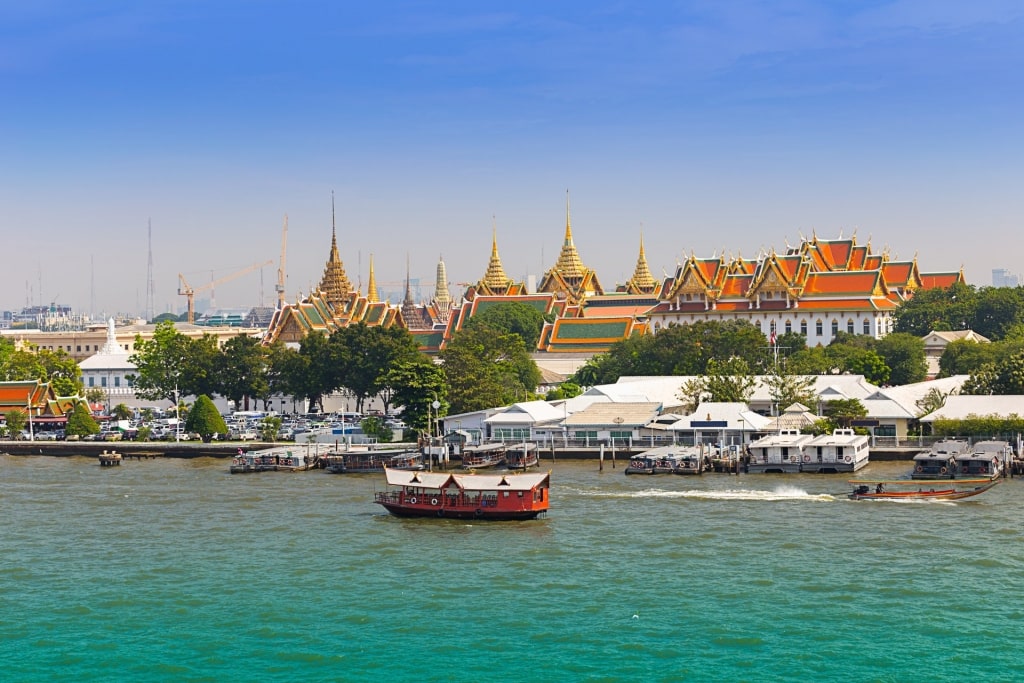
Chao Praya River, Bangkok
You can also escape the streets with a serene river cruise along the Chao Praya. Cruise over its waters, the shade of antique brick, past temples and riverside markets. The best time to travel is in the evening when dinner is offered on board and the sunset tints the tendrils of clouds lingering in the evening sky while below neon signs pop into vivid life.
Read: Two Days in Bangkok
Food
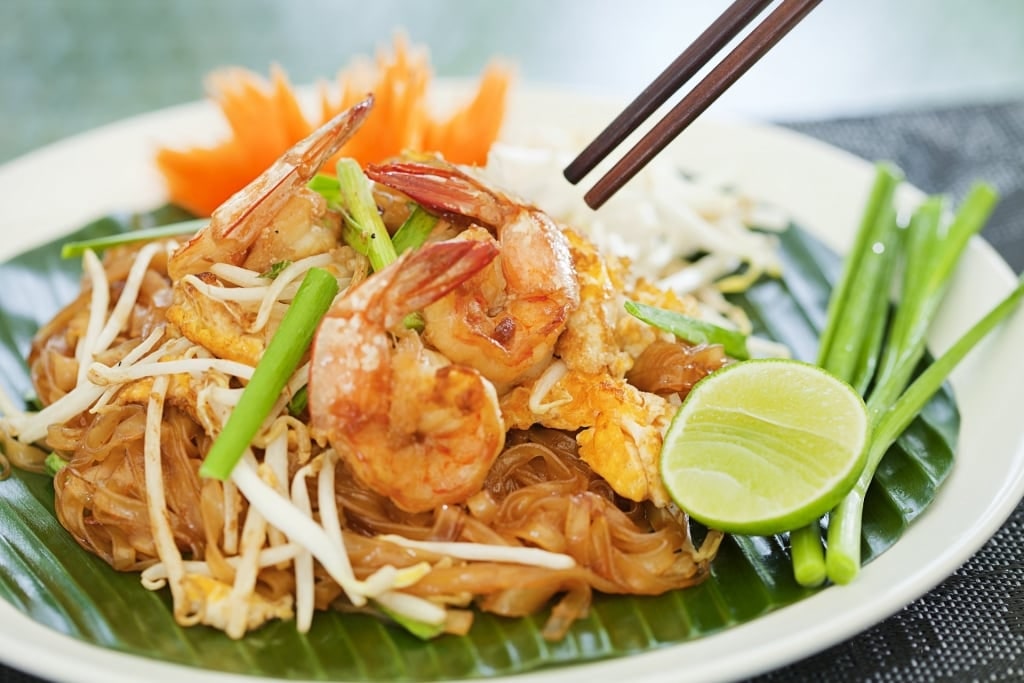
Pad thai
Thai food is, for many, the world’s number one cuisine. It balances spice with fragrance, offers complexity without fussiness, and manages to always leave you wanting a second helping.
Even more extraordinary is that whether you’re purchasing food from a stall in the haze of the Bangkok streets or at a shack beside the crystalline Andaman Sea, the quality seems to be of a piece. Naturally, specialisms vary, with the northeast known for heat and sticky rice while the south prefers seafood marinating in fresh coconut milk sauces.
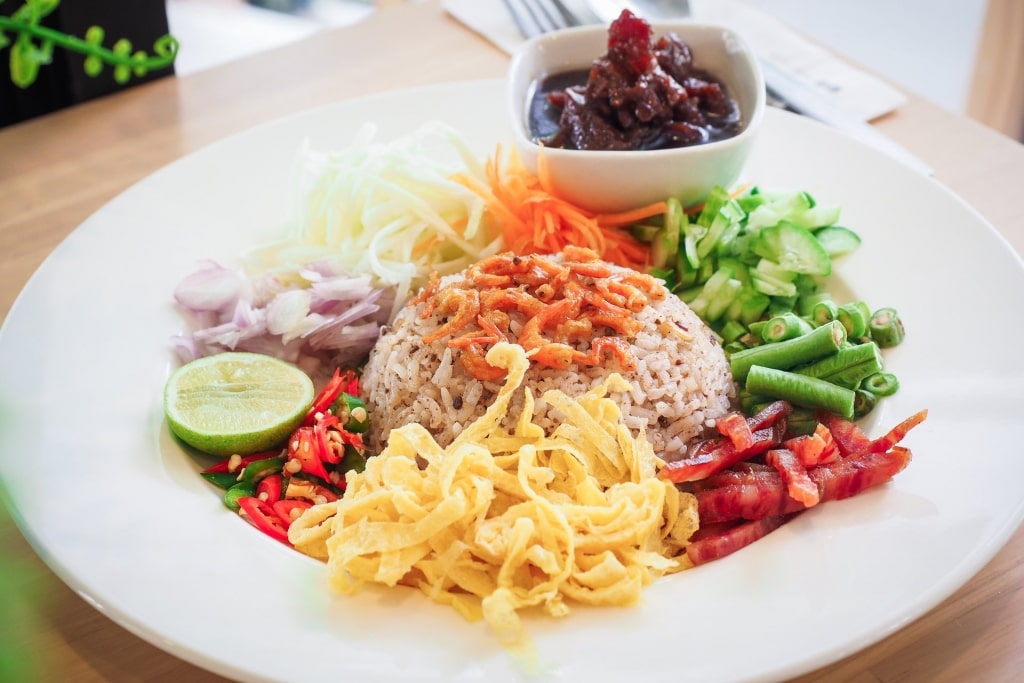
Khao kluk kapit
Whether you’re a fan of a silky green curry, nutty pad thai, or a sweet and sour bowl of tom yam goong, prepare to have your taste buds overwhelmed. And don’t forget to go off the beaten track: there’s an entire hinterland to the Thai menu including flavorful, homespun classics such as khao kluk kapit (fried rice with shrimp paste) and kai jeow nam (wok-fried omelet with fermented Thai sausage).
Temples
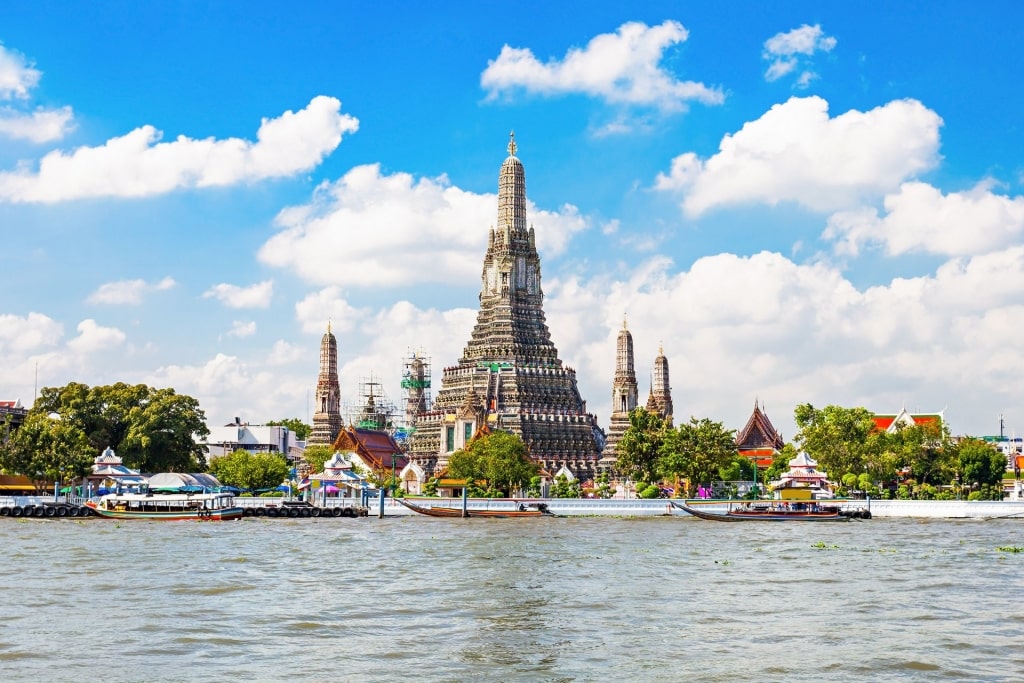
Wat Arun, Bangkok
A historically Buddhist country, Thailand and its jungles, mountains, islands, and cities bristle with the gilt pinnacles of its innumerable temples and spirit houses. Many of its most significant sites, which house its most revered buddhas, can be found in and around the capital.
First among equals is Wat Arun, separated from the Grand Palace by the waters of the Chao Praya. Its 82-meter-high central tower is one of the city’s most recognizable sights, especially when lit at night or dramatically framed by an extravagant Bangkok sunset.
The temple is a deliberate echo of the towers of Angkor Wat and a close-up visit to the “Temple of the Dawn” reveals how the imperious tower is garlanded with flower motifs bright with innumerable pieces of broken porcelain.
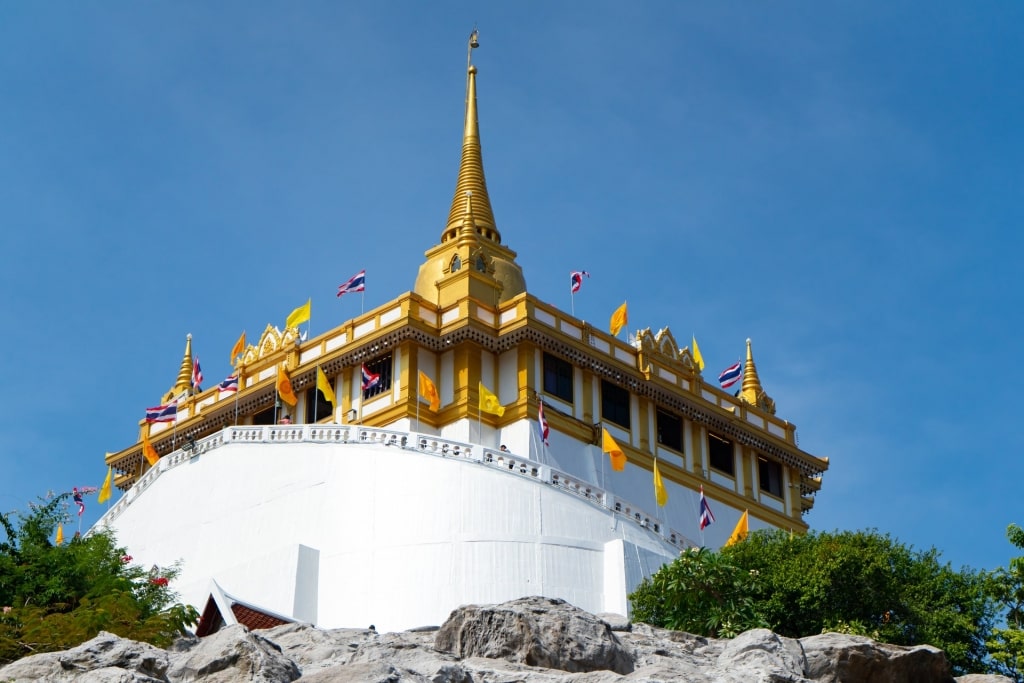
Wat Saket, Bangkok
On the other side of the Grand Palace is eye-catching Wat Saket, also known as the Temple of the Golden Mount. Dramatically elevated above the encircling parkland and topped with an immense golden stupa, Wat Saket dates back to the medieval Ayutthaya era.
Hiking up the encircling 300 steps of this popular pilgrimage site rewards you with a sacred buddha at the top, as well as staggering 360-degree views of the city’s Old Town.
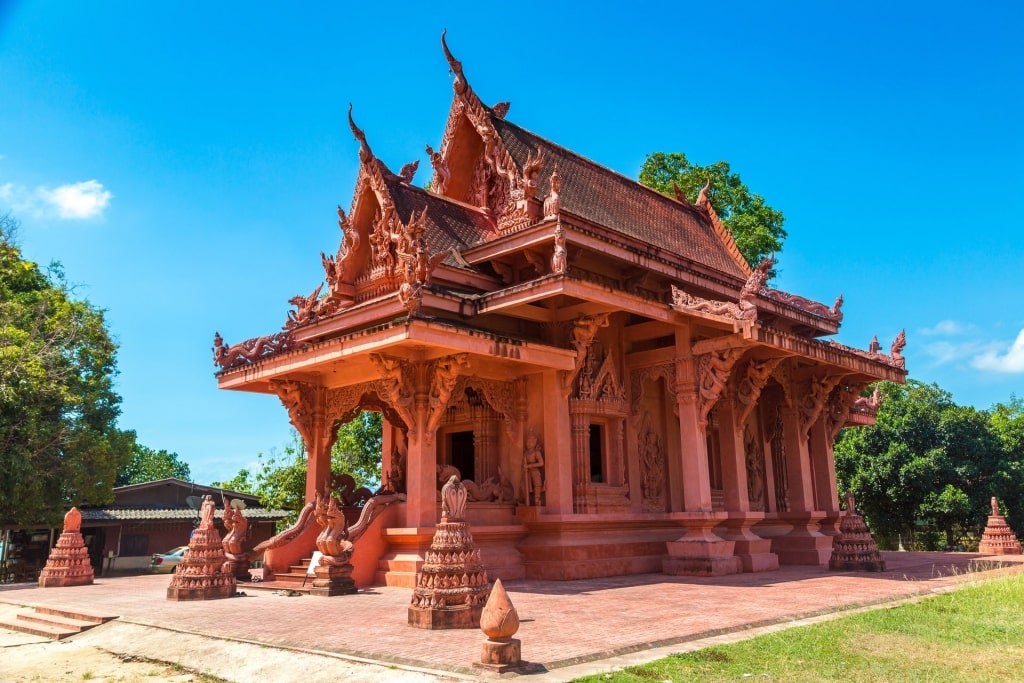
Wat Sila Ngu, Koh Samui
While Bangkok might outshine the rest of the country in terms of holy bling, impressive displays of reverence aren’t confined to the capital. A good example is Wat Sila Ngu, or the Red Temple, found on Koh Samui.
Overlooking the southern Hua Thanon Beach, its centerpiece is the ornate stone snake pagoda, decorated inside and out with elaborate bas reliefs re-telling Buddhist scriptures.
Finally, temples in the country aren’t confined to the spiritual. Returning to Bangkok, a visit to Jim Thompson’s House is to step into a shrine to Southeast Asian art. Collected by ex-pat businessman Jim Thompson in his purpose-built Bangkok mansion-turned-museum, this is a wonderful introduction to another side of the regional culture.
Buddhas
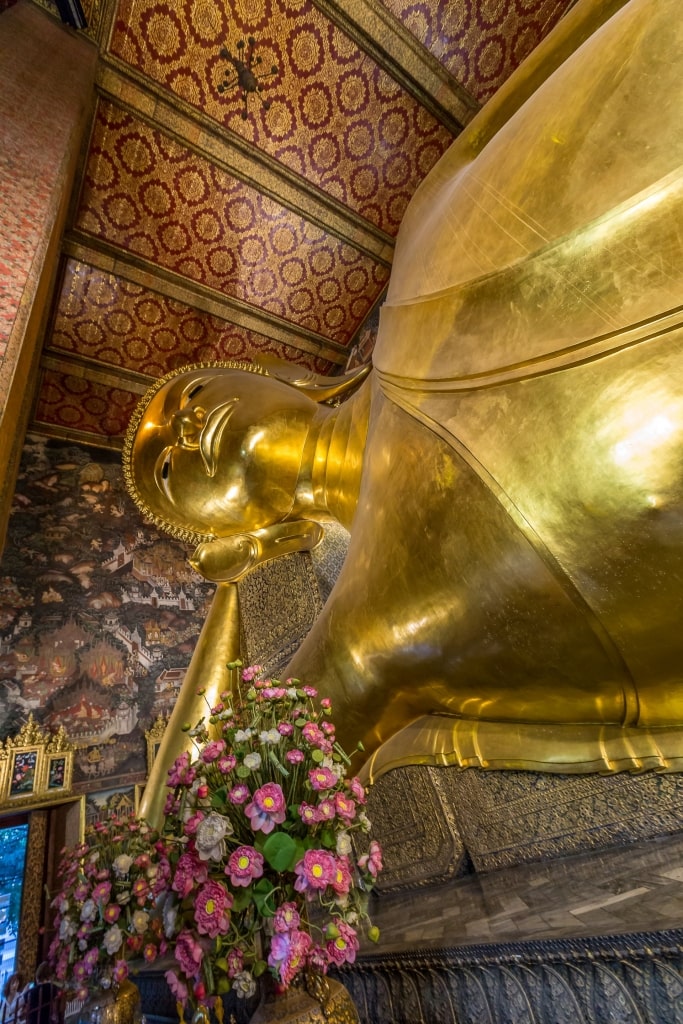
Wat Pho, Bangkok
As hikers in Scotland’s Highlands like to “bag Munros”—essentially summiting as many mountains as possible—visitors to Thailand often do the same, except with buddha sightings. Fortunately, to avoid too much repetition, the glorious Buddhas of Thailand come in many varying poses, sizes, and materials.
Bangkok’s Wat Pho temple contains the wide-angle-lens-defying 46-meter-long Reclining Buddha. This giant golden statue is barely contained by its temple, helping to emphasize the icon’s enormity. The reclining pose has significance within Buddhism, representing the moment before the Buddha entered into nirvana.
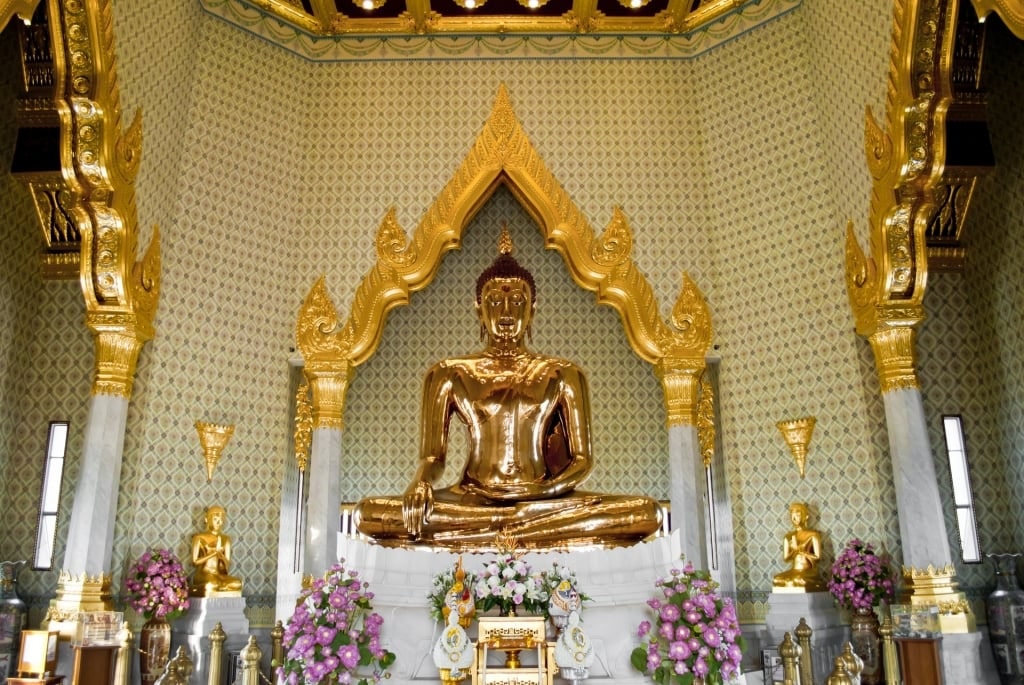
Wat Traimit, Bangkok
You’ll find another outsize idol in Wat Traimit Temple, where the five-ton Golden Buddha sits in enlightenment. This buddha, wrought from solid gold, was encased within a stucco disguise for two centuries. When it was dropped while being transported to a new location the statue’s true nature was exposed (a happy event for the Thai nation and, one imagines, for whoever dropped it).
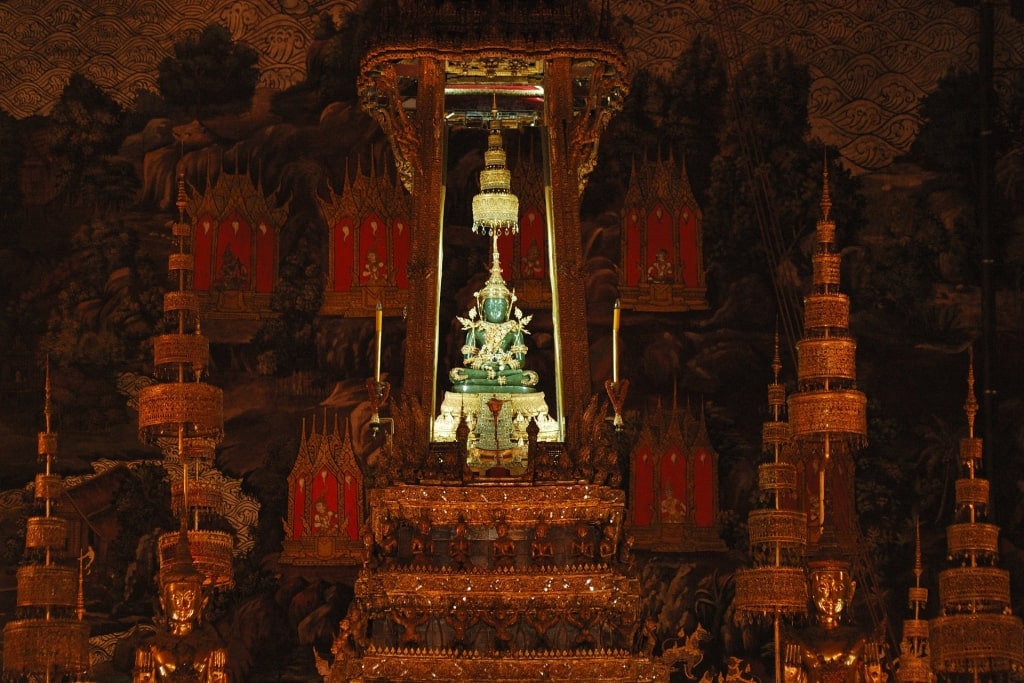
Emerald Buddha
But despite the immensity of the Golden Buddha and its lore, it’s the Emerald Buddha contained within the Grand Palace that’s most revered in Thailand. Neither of humongous proportions nor wrought from overly expensive materials, this jade green buddha is carved from a single piece of jasper. However, the spiritual importance of ‘The Protector of Thailand” cannot be understated, and the fact that the King of Thailand changes the statue’s clothes exemplifies the reverence in which it is held.
If you’re interested in a little statuary variety, travel to the island of Koh Samui for Wat Plai Laem. This serene temple set in the middle of a lake is overlooked by a giant, 18-armed sculpture of Guanyin, the goddess of compassion. Once you’ve taken in this awe-inspiring icon, make a donation to the temple and scatter the supplied fish food into the still waters.
Islands
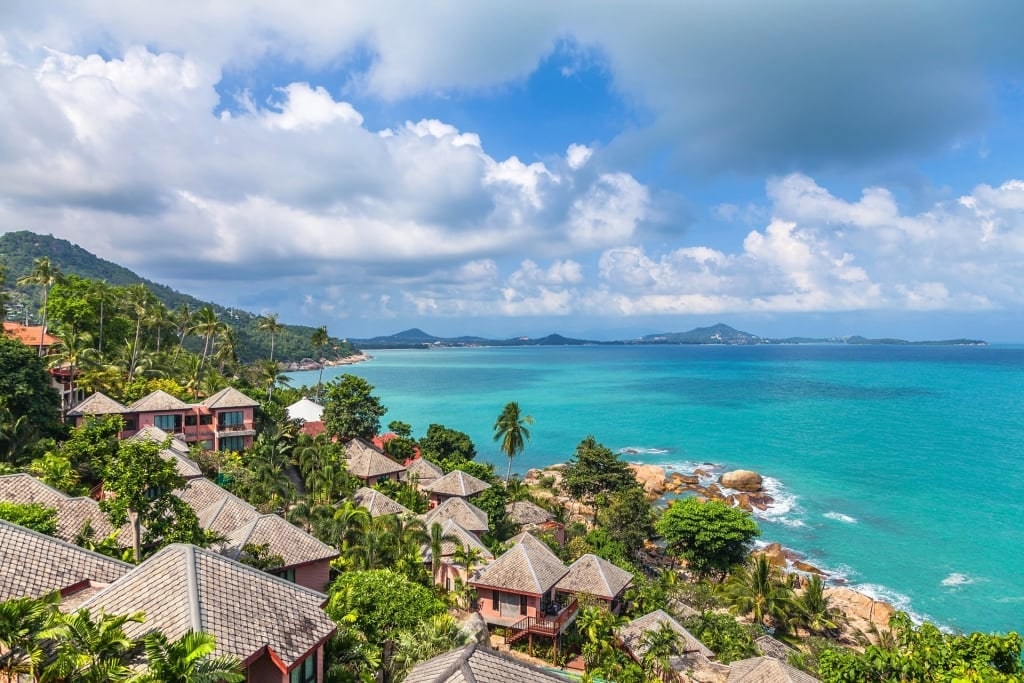
Koh Samui
Exquisite island breaks are what Thailand is known for the world over. While there is a galaxy of well over 1,000 islands, this dizzying number can be swiftly reduced into manageable east and west coast groupings that excel in the kind of palm tree, jasmine-scented breeze experience that Thailand consistently delivers.
In the west, lapped by the azure waves of the Andaman Sea, you have high-profile satellites such as Phuket, the archipelago of Ko Phi Phi, and Koh Lanta. While Phuket’s and Ko Phi Phi’s verdant hills and staggeringly beautiful coastlines are studded with high-end resorts catering to celebrities and honeymooners, Koh Lanta offers a more barefoot luxury experience.
Read: Best Beaches in Phuket
The Andaman Islands are also considered a better proposition for diving, while a boat ride from Phuket will take you into the thicket of towering limestone islands that make up Phang Nga Bay.
In the eastern Gulf of Thailand, the islands are generally thought of as less developed than those found in the west. High-profile isles include mellow Koh Tao and raucous Ko Pha Ngan, while perhaps the most famous island in the east is Koh Samui. Thailand’s third-largest island brings together all of the elements that make an island escape in Thailand so desirable, while, even in high season, offering idyllic spots away from the crowds.
Beaches
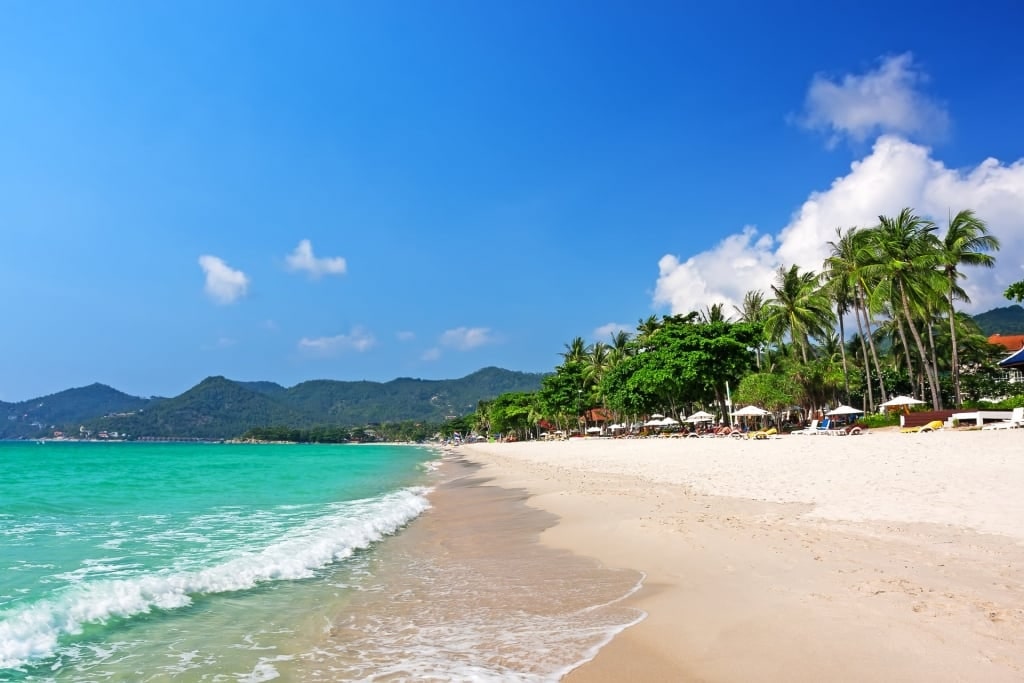
Chaweng Beach, Koh Samui
Glorious stretches of white sand tended by gentle, glassy waves are probably, above all else, what Thailand is known for. With so many islands and miles of coastline to the south, the country is blessed with an overabundance of paradisiacal spots to plant a sea-view luxury bungalow or just unroll a towel.
Have a stress-busting Thai massage as you look out over a bay bristling with jungle-topped karst towers, or find a stick of chilled, juicy pineapple to beat the tropical heat while you relax.
Large islands, such as Koh Samui, are usually blessed with several superb beaches to explore. Brochure-perfect Chaweng is a fantastic example, as it’s a spacious silken ribbon of sand and sea with restaurants and food shacks nestled in the palm groves.
The clear, shallow water of this east coast beach is excellent for snorkeling, while at night the illuminated palms are a rainbow of color above the cocktail bars.
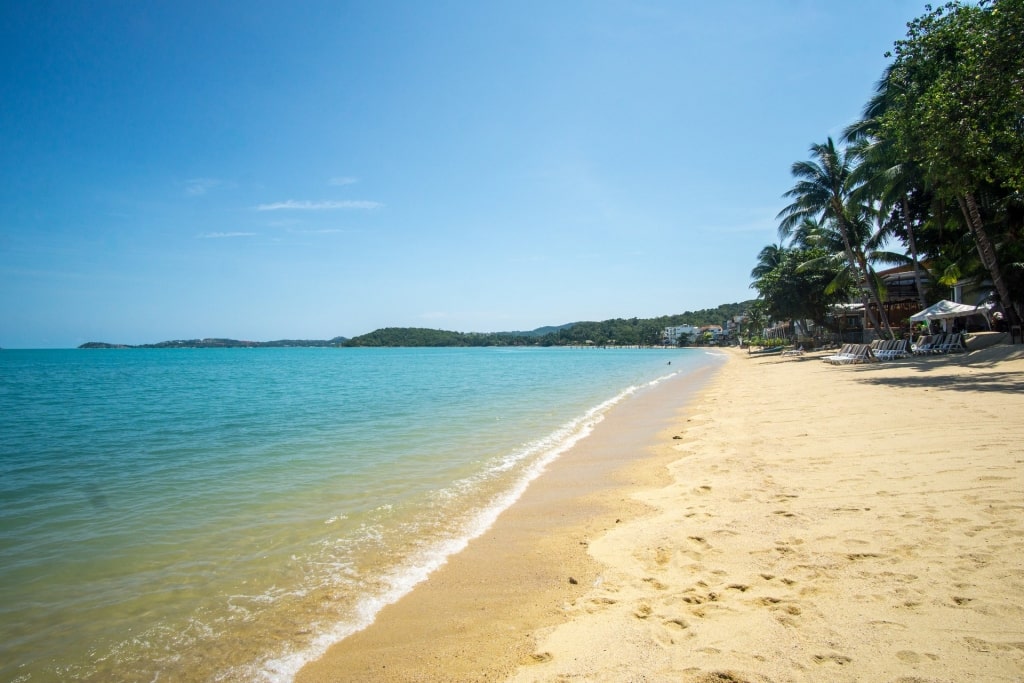
Bophut Beach, Koh Samui
Another bucket-list contender is Bophut Beach, which offers a slightly different proposition. This north shore beach stands out from any number of palm-shaded sandy strips thanks to the presence of Fishermen’s Village. A remnant of French colonialism, this previously sleepy village is now a warren of chic cafes, lively bars, and boutique hotels, while still managing to retain its historic charm.
If you’d rather seek solitude, you’ll find less feted (but no less alluring) beaches all over the island. Or pack a picnic, hire a boat, and have a castaway-style beach picnic on a deserted island just as the sun goes down.
Nature
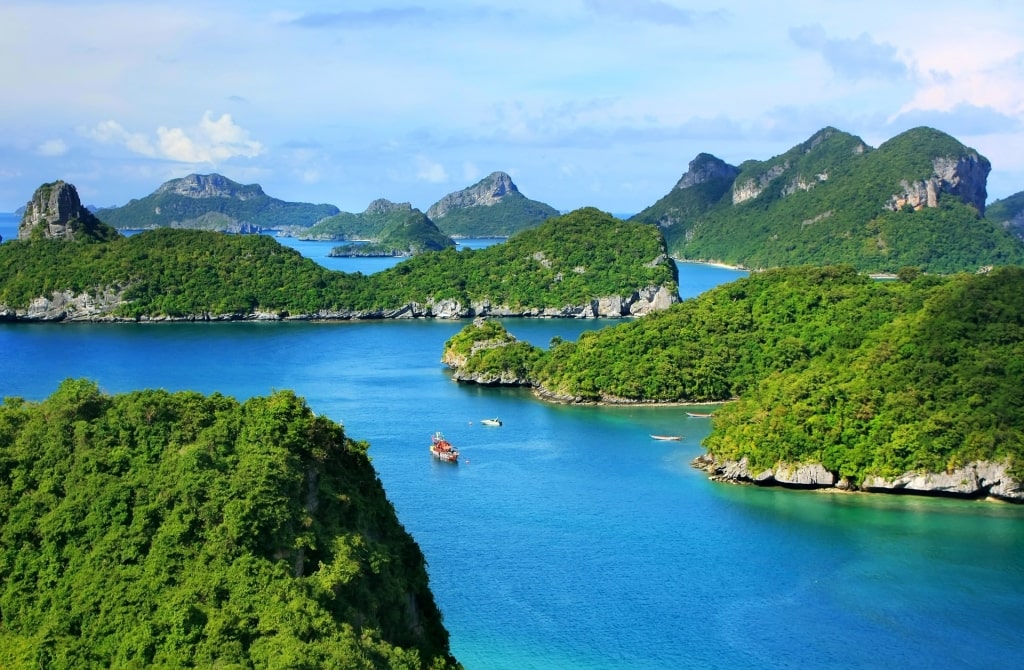
Ang Thong National Marine Park
While spectacular beaches are what Thailand is known for, it’s surprising how little focus is given over to the rest of Thailand’s immense natural treasures. Over a quarter of the country’s landmass is forested, with elephants, tigers, and cobras only a few high-profile examples of the creatures that populate the lush countryside.
As with Angkor Wat in Cambodia, nature and the country’s historic sites sometimes collide in spectacular ways. In Thailand, that’s best witnessed at Ayutthaya, the country’s former medieval capital where ruined temples are surrounded—and sometimes sacked—by the irresistible tropical vegetation. Famously a Buddha’s head is caressed by tree roots at the 14th-century Wat Phra Mahathat.
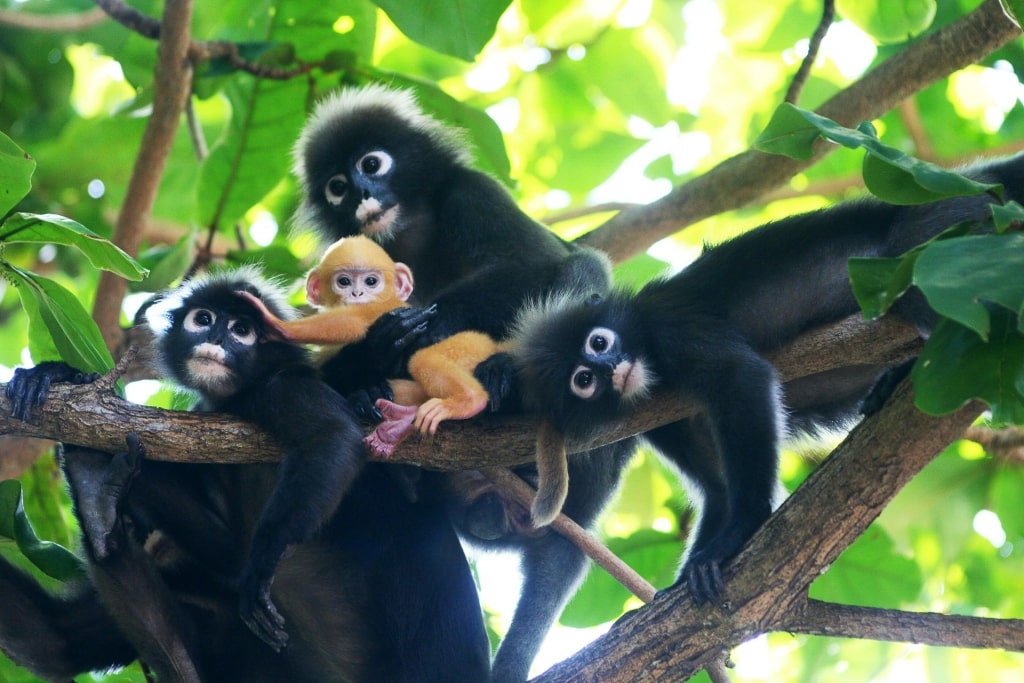
Ang Thong National Marine Park
Thailand’s natural wonders also extend beyond terra firma. Ang Thong National Marine Park, a chain of 42 mostly uninhabited islands located in the Gulf of Thailand, is a stunning example of the country’s charismatic coastal karst.
Located a several hours’ boat ride from Koh Samui, this “Golden Basin” is undeniably gorgeous, but it’s also famous for its impressive biodiversity that includes pythons, white-bellied sea eagles, and langurs that clamber in troops near the water’s edge.
The biodiversity above is matched beneath and during a snorkeling or diving trip, you’re likely to encounter species such as parrotfish, rays, and whale sharks.
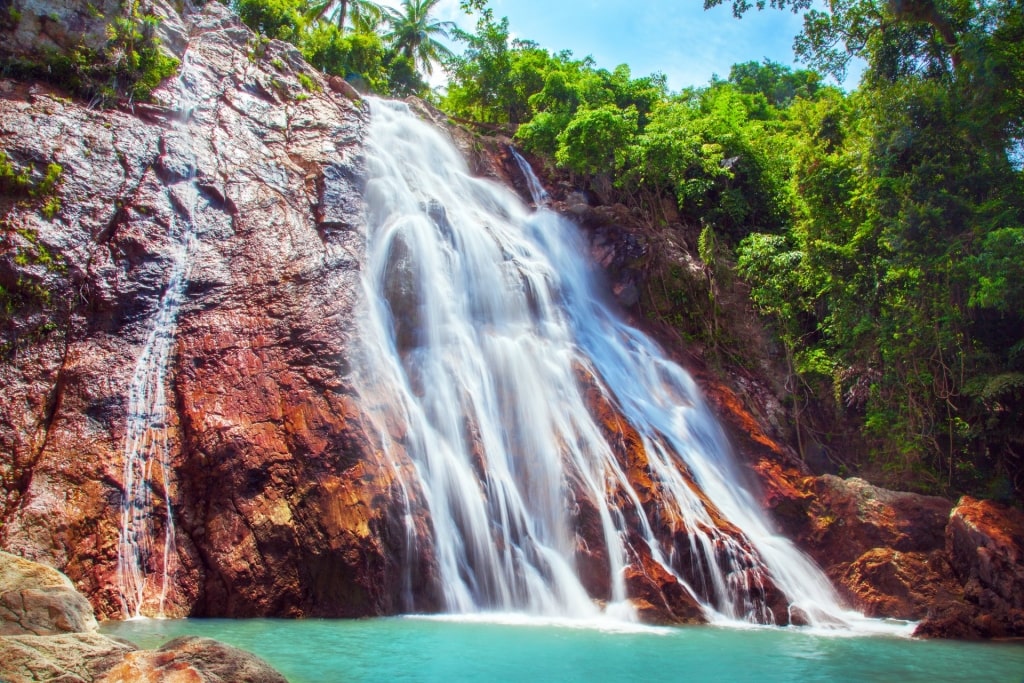
Nu Muang waterfalls, Koh Samui
Koh Samui’s hinterland also has its own natural wonders, such as the Nu Muang waterfalls. While impressive waterfalls are to Thailand as tall mountains are to Switzerland, the Nu Muang falls are notable for the striking purple-orange rock over which they flow.
Best of all, unlike the famous Emerald Lake at Ang Thong, where you can look but not touch, Nu Muang’s lime green pools are always open for a refreshing dip.
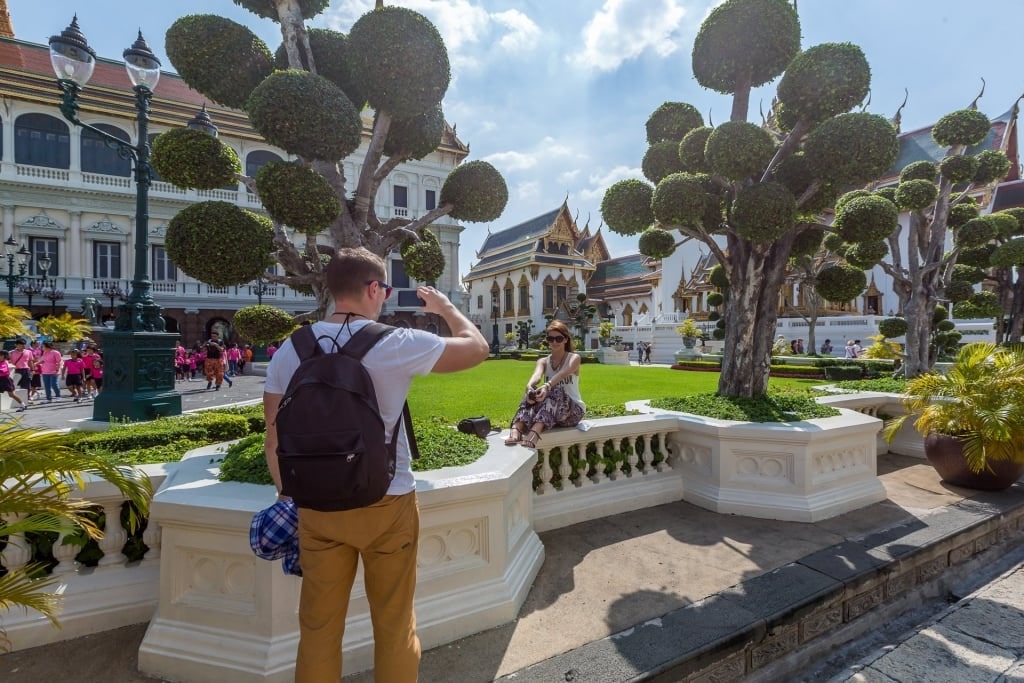
Grand Palace, Bangkok
Discover what Thailand is known for and other fascinating destinations in the region on a cruise to Southeast Asia. Experience the rich culture, delicious cuisine, and spirited atmosphere, then indulge in luxurious accommodations, world-class restaurants, and thrilling entertainments onboard.
Browse cruises to Thailand on our website and book a cruise vacation to see the captivating wonders of Asia.
